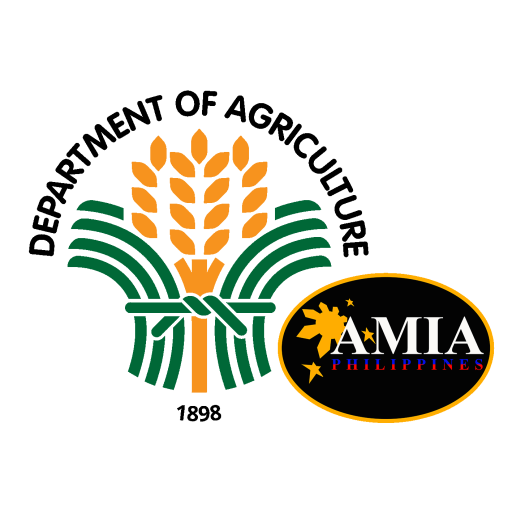
Nature-based solutions and landscape approaches can support climate-resilient agriculture, fisheries and agroforestry, improving the livelihoods of millions of Filipinos in the agrifood systems.
04/07/2024 As the Philippines prepares for a transition from the El Niño weather phenomenon to La Niña in mid-2024, the country faces more pronounced climate-induced risks. Agriculture and fisheries are particularly vulnerable to the expected upcoming rapid transition from frequent droughts to intensified tropical cyclones.
At the same time, the transition towards resilient and sustainable agrifood systems in the Philippines is already well underway. From 21 May to 23 May 2024, the Food and Agriculture Organization of the United Nations (FAO) and the Department of Agriculture – Climate Resilient Agriculture Office (CRAO), generously supported by the Green Climate Fund (GCF), co-hosted a participatory foresight workshop called “Climate actions and resilience for the agriculture sector in the Philippines” held in Quezon City. The workshop participants, representing the government, farmers, Indigenous Peoples, youth, financial institutions, and development partners discussed how supporting smallholder farmers and fisherfolk as well as Indigenous Peoples can contribute to a food-secure and climate-ready Philippines.
Access to finance: The missing puzzle piece
The climate vulnerability of the Philippines is conditioned by its geography and the population distribution across the archipelagic country. Climatic hazards are many, including those induced by El Niño. The Philippines is ranked the most vulnerable country in the world, with agriculture and fisheries sectors absorbing 22 percent of the economic impacts caused by natural hazards and climate-related disasters. Exposure to the impacts of climate change on agri-fisheries puts 10 million family farmers – who play a key role in ensuring the food security and nutrition of over 100 million Filipinos every day – in a vulnerable position.
Limited access to market, finance and risk-mitigation tools in agriculture, and lack of private-sector engagement in agrifood systems make it difficult for the Philippines to adapt to the intensifying tropical cyclones, floods and droughts. Additional financial resources will be key for the implementation of existing policies – evidenced by the USD 72 billion finance gap to realize the country’s nationally determined contribution (NDC). More funding is also required for the scale-up of programmes advancing climate resilience in agriculture in the Philippines.
Translating country priorities into concrete agriculture projects
Country-driven participatory approaches to accessing climate finance for agriculture can help close the climate finance gap in agrifood systems in the Philippines. That is why the participants first identified the key socioeconomic and environmental drivers, which impact agrifood systems in the Philippines. These range from climate change, scarcity and degradation of natural resources and inequalities to innovation and science and public investment in agrifood systems.
Addressing these drivers as investment opportunities for a more sustainable future will help the Philippines achieve its ambitious climate action and agriculture policies such as the National Climate Change Action Plan (NCCAP) 2011-2028, the National Agriculture and Fisheries Modernization and Industrialization Plan (NAFMIP) 2021-2030 and the latest nationally determined contribution (NDC). The participants examined these policies to align emerging project ideas with specific country targets. For example, they considered that the NDC commits to a 75 percent reduction in greenhouse gases emissions by 2030, with 72 percent of emissions conditional on external support such as access to finance.
Ms Alicia Ilaga, Director of the Climate Resilient Agriculture Office of the Department of Agriculture said: “The foresight planning process utilized in this workshop was an excellent and valuable guide for better planning and decision-making. This process ensures that the climate action programmes and projects that we will be implementing have the greatest impacts on their intended stakeholders considering future scenarios.”
The participants proposed to create integrated projects, combining agriculture and fisheries development across landscapes. Unsurprisingly, as the Philippine archipelago has seven times more water than land with rich fishing grounds, the adaptation of fisheries through climate-resilient aquaculture technologies was on top of the agenda throughout the discussions.
Nature-based solutions also have the potential to enhance the resilience of agri-fisheries communities with water management practices and traditional knowledge. For example, climate-resilient agroforestry, agricultural and fisheries practices and innovations can support sustainable watershed development throughout upland, lowland and coastal ecosystems. This can also improve livelihoods for one million family farmers, fisherfolks, Indigenous Peoples, and rural women.
Strong partnerships for future climate finance for agri-fisheries in the Philippines
Large-scale investments in the agrifood systems transformation in the Philippines will need partnerships to achieve the PHP 8 trillion (USD 136 billion) required to achieve the NAFMIP alone. With that in mind, FAO and the Department of Agriculture – Climate Resilient Agriculture Office convened a diverse group of stakeholders to identify different views that can enable a successful, ambitious project.
Mr. Lionel Dabbadie, FAO Representative in the Philippines said: “Working together is key to developing successful project ideas for agrifood systems, leveraging climate finance from the GCF and other donors and investors.” He added that FAO remains committed to supporting national, sector-specific climate change policy frameworks, working with existing and future partners to leave no one farmer and fisher behind in the Philippines.
About the project
The Agriculture Sector Readiness for enhanced climate finance and implementation of Koronivia Joint Work on Agriculture priorities in Southeast Asia project aims to enhance the capacity of six countries in Southeast Asia to develop national climate finance investment programmes and projects linked to adaptation and mitigation priorities for the agriculture sectors. It also aims to facilitate knowledge exchange and learning to promote innovative mechanisms for public and private sector climate finance at national and regional levels. The project is implemented by FAO with the support of the Green Climate Fund (GCF) – the world’s largest dedicated fund for climate action – together with six participating countries: Cambodia, Lao PDR, Malaysia, Philippines, Thailand, and Vietnam.
For more information about the project in the Philippines, please contact FAO-PH@fao.org. To learn about the partnership between FAO and GCF, please visit the website.
